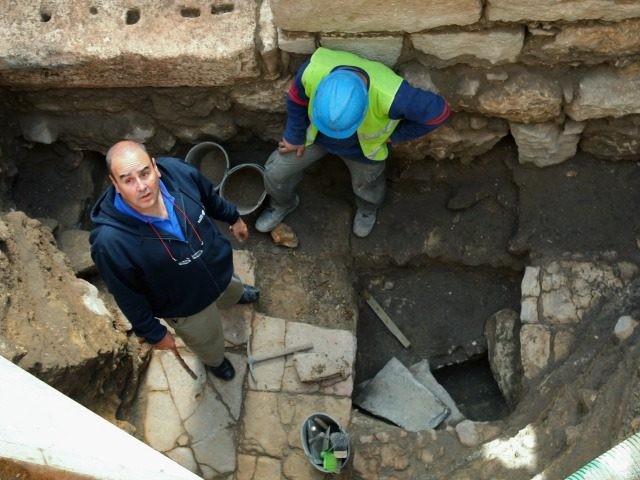TEL AVIV – As Jews worldwide on Sunday marked Tisha Be’Av, the Jewish fast day commemorating the destruction of the Second Temple at the hands of the Roman Empire in 70 CE, Jewish archaeologists recount the challenges in unearthing the artifacts that prove the unbreakable bond between the land of Israel and the Jewish people.
Discoveries such as the royal seal of King Hezekiah testify to the 3,000-year connection between ancient and modern Israel, City of David International Affairs Director Ze’ev Orenstein says.
However, such findings are not without controversy and cause grief to Palestinians and other groups that attempt to deny historical Jewish ties to the land.
“If all that stuff is built on the notion that none of this ever happened, and then you pull a seal out of the ground with the names of the ministers straight out of the Bible one after the next in the same verse … that causes problems,” Orenstein told the Jerusalem Post.
“Unfortunately today, much of what you can call ‘Palestinian nationalism’ or ‘Palestinian identity’ is based on the narrative that the Jewish people have no legitimate ties to this land … that we’re a bunch of white Europeans,” says Orenstein.
“That would then make excavations in the City of David particularly problematic.”
In April, UNESCO’s executive board voted on a resolution drafted by the Palestinian Authority and Jordan which entirely ignored Jewish ties to Judaism’s holiest site, the Temple Mount, referring to it only by its Muslim name Haram al-Sharif.
A similar resolution discussed at July’s World Heritage Committee was delayed until October after the military coup in Turkey forced UNESCO to cut short its meeting in Istanbul.
Israel is likely to petition the 21-member-board to vote against the resolution. According to Orenstein, the archaeological discoveries unearthed at the City of David should serve as the main piece of evidence.
“This isn’t a Jewish issue, it’s not a Christian issue, even though it’s denying these events when they’re so clearly proven from an archaeological perspective,” says Orenstein. “But really, it’s an attack on truth, because if you can deny objective truth … tomorrow it’ll be about something else.”
UNESCO director-general Irina Bokova issued a warning at the time against such resolutions, saying they damage the Old City of Jerusalem’s status as a World Heritage site for all three monotheistic religions.
“To deny or conceal any of the Jewish, Christian, or Muslim traditions undermines the integrity of the site, and runs counter to the reasons that justified its inscription in 1981,” Bokova said in a statement.
For Orenstein, the mammoth stones at the foot of the main entrance to where the Herodian Temple once stood not only represent the Jewish people’s loss and mourning, but also symbolize the future and the rebuilding of the Temple.
“On one hand, we’re standing in an area where the destruction of Jerusalem happened, and yet at the same time, we’re standing in a place where we see the rebirth, and the return, and the redemption of Israel,” says Orenstein.
“So yes, we have a lot to remember and there are many lessons that we still need to learn … but at the same time we’re growing, and thriving, and we’re home.”

COMMENTS
Please let us know if you're having issues with commenting.